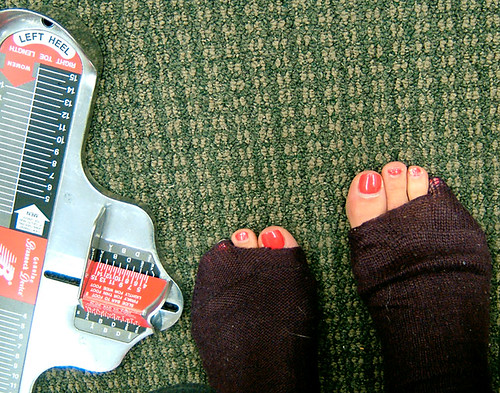 |
| Image Credit: Flickr/Akbar Sim (voorheen Meneer de Braker) |
This week a struggling high school student visited my alternative program asking about how to enroll himself. In a nutshell, here is what he said:
- I am a senior and I really want to graduate this year.
- I struggle with reading and writing, but when I ask for additional help from my English teacher she tells me that she's already explained things to the whole class and she doesn't have time to explain it to me again.
- I am really, really good at math. My teachers just need to show me how to do a problem once and then I can do it in my head. But I've flunked almost all of my math classes because I don't show my work; or when I do, I don't do the problems the same way as the teacher wants them.
- My school seems to think that one size fits all when it comes to learning...but their ways of teaching don't fit me! I wish I could go somewhere where I could test out of math classes and get extra help in English. I wish I could go somewhere that offered more hands-on learning because I learn better when things are hands-on.
I was so impressed with this student's self-awareness and motivation! He wants to graduate, he knows his academic areas of weakness and his academic strengths, and he knows how he learns best. These are all qualities that will benefit him greatly in the world of work. But in a traditional school setting, those same qualities are forcing him to consider dropping out or getting a GED. There is something very wrong with this picture!
This student is exactly the kind of student I recommend for enrollment in my alternative program---but due to constraints of the educational system, he cannot enroll. Why?
The student who visited me does not attend one of our partnering schools. We are an alternative program not an alternative high school. This means that we do not offer our own high school diploma; instead, we partner with traditional high schools in our area. They dictate the graduation requirements for their students and provide funding to support our offsite program. When students have met all graduation requirements, they receive a traditional high school diploma from their home school. If this student attended our program, any work completed in our program would be worthless because it would not count toward a high school diploma from a partnering school.
Why doesn't the school just partner with our alternative program so that this student can earn a diploma? In this case there is one main reason: the school the student is enrolled in has its own alternative program. They don't want to send someone to another district when they have their own alternative classroom. The problem is that their alternative program only offers computer-based instruction for at-risk students. Their alternative program adopts a "one size fits all strategy" that is different from the traditional school's strategy, but still only offers one style of learning for all of the kids enrolled.
It is frustrating for this student to know that there is a program like mine that would offer him choices when it comes to learning, that would offer him more one-on-one assistance if he needs it, and that would allow him to graduate on time with his class--but he can't enroll because he doesn't live in the right district. It is frustrating for me to see a kid who so clearly exhibits qualities that will make him a successful adult, who is motivated to do what it takes, but might not graduate because of school finance and residency issues.
A lot of people talk about school reform. A lot of people talk about issues relating to teachers and how they are paid, about standardized testing and failing schools. But what about the kids? Where is the ed reform plan that focuses on the kids? The student who visited me is one of many, many kids who want to learn, but feel lost in the system. No amount of standardized testing or teacher salary-adjustments will help him be successful in our current educational system. At what point do we stop trying to fix the small stuff and realize that it's time for a system-wide change?
In my dream world, that student would walk into our school building and be welcomed with open arms. Home address and financial partnerships between districts wouldn't matter. A kid wants to learn and a school wants to help him--that's all that should matter. How can we make that dream come true?










